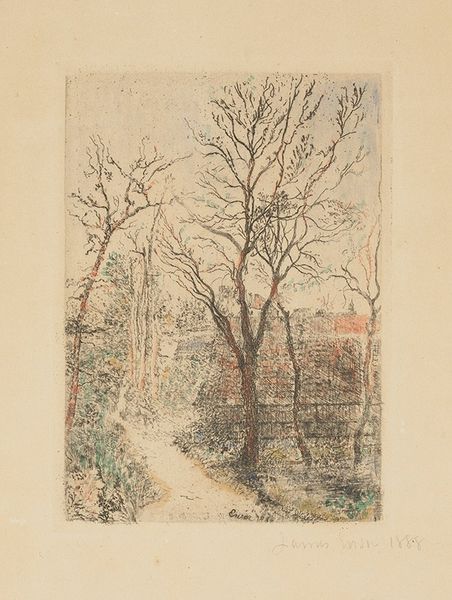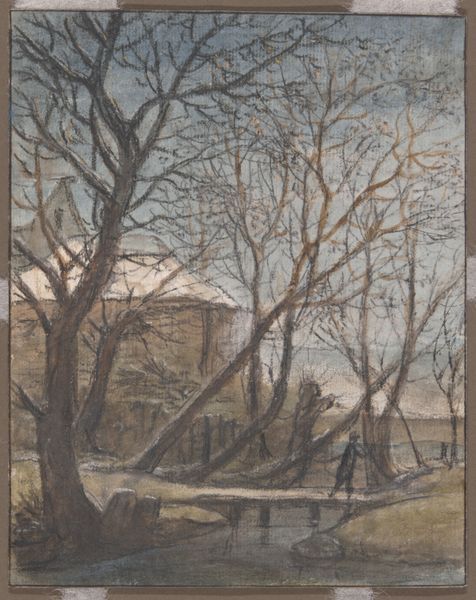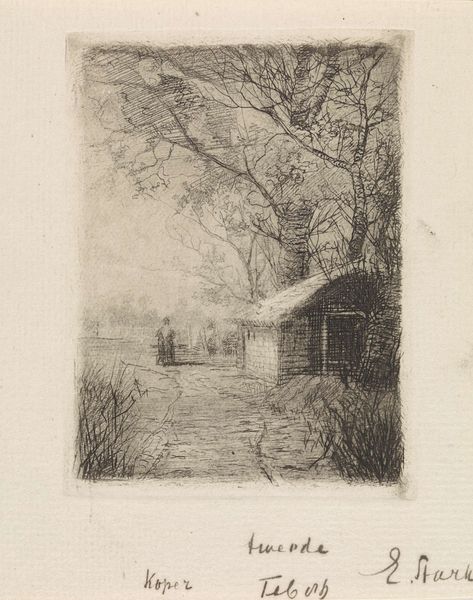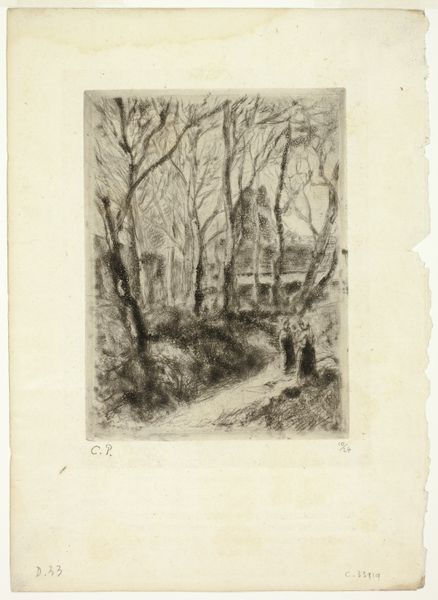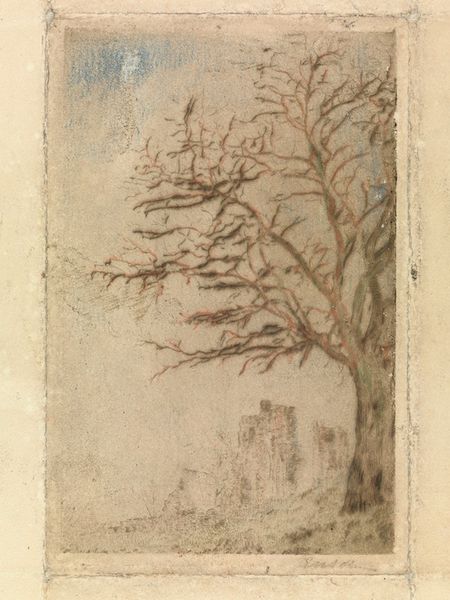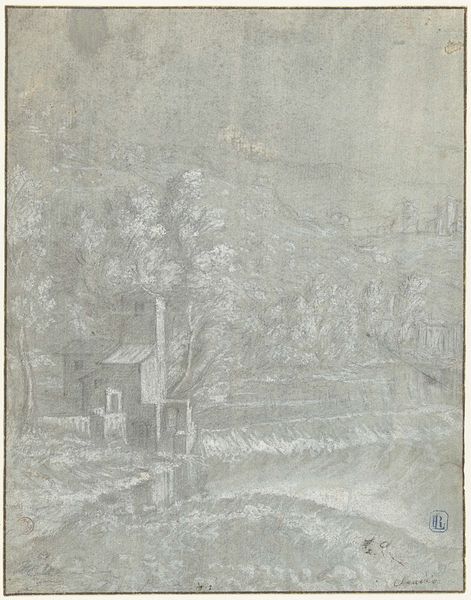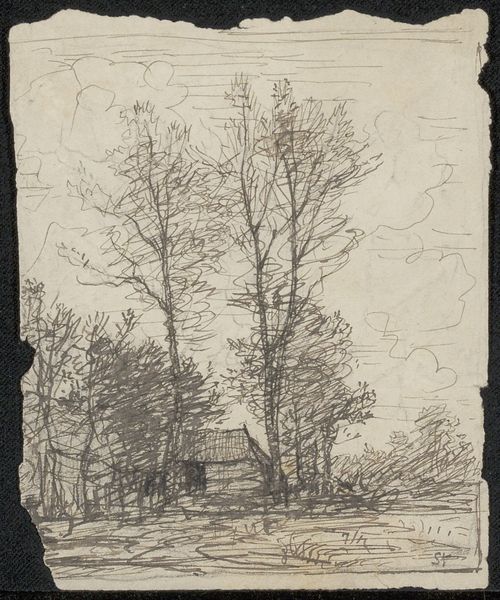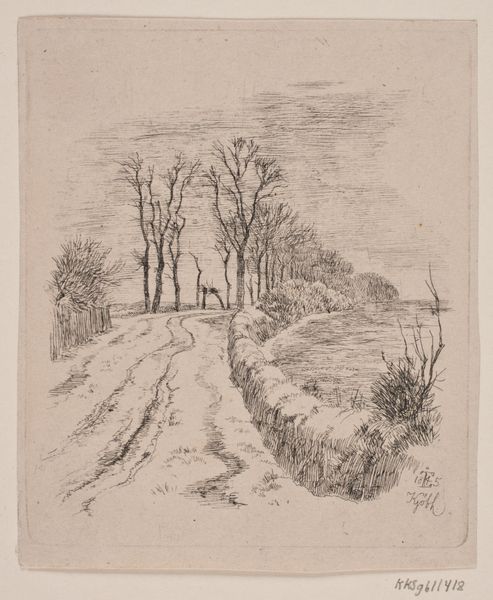
coloured-pencil, painting, watercolor
#
coloured-pencil
#
painting
#
landscape
#
watercolor
#
coloured pencil
#
post-impressionism
Copyright: Public Domain: Artvee
Curator: What an unassuming, yet deeply compelling, piece. This is James Ensor's "Voetpaadje te Groenendaal," created in 1888. It's rendered in watercolor and colored pencil. What strikes you first about it? Editor: The texture, immediately. You can see the layering, the build-up of color in the roof and the pathway. It feels raw, almost like you could touch the individual strokes that formed it. What was Ensor saying with his choice of such visible marks and mediums? Curator: Precisely! This was Ensor breaking free, rebelling against the bourgeois expectations of polished artistry. Looking through the lens of post-impressionism, "Voetpaadje te Groenendaal" hints at the anxiety bubbling beneath the surface of the supposed rural idyll. This wasn't just about pretty scenery, it was a commentary on society's constructed ideas around place and identity. The unrefined texture that you note is, from a critical perspective, aligned to an experience of life that recognizes the rough reality of lived life in rural Belgium beyond idealized fantasy. Editor: So it's less about the aesthetics of rural life, and more about a visceral response to the way labor and nature are intertwined? I mean, the red-tiled roof seems particularly significant then, doesn't it? Someone clearly labored to create this scene's central focal point. How would that relate to contemporary thinking about production? Curator: I believe it speaks volumes to our present conversations about exploitation and sustainable practices. Even now, as in the 1880s, the art object contains so much material evidence and societal trace to unpack regarding labor inequity. Note how Ensor draws the roofs uneven, as if buckling, not uniform and clean in presentation. How interesting to explore the way in which this imagery relates to current challenges facing communities. Editor: And that tension—the way the landscape bends back towards the human structure—creates a palpable sense of weight. Thanks to how James Ensor made use of modest mediums and simple scenes, what could come off as simple reflection embodies material impact and social change. Curator: A humble reminder, through this simple scene, of the intricate web of production and labor underpinning every structure—and, thus, our own responsibilities and roles within this dynamic system. It serves as a quiet call to recognize these realities.
Comments
No comments
Be the first to comment and join the conversation on the ultimate creative platform.
